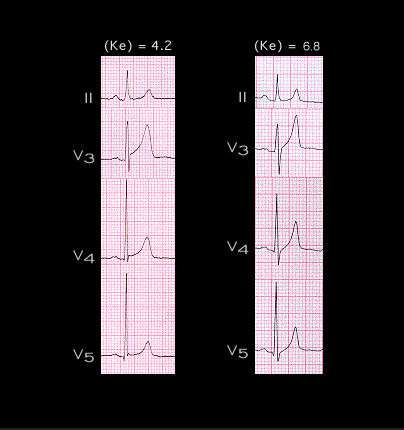
Shown here are selected leads from the two tracings for a more direct comparison of the T wave changes that occur with moderate elevations of serum potassium concentration. These are the first electrocardiographic manifestations of an increase in extracellular potassium. It is important to recognize however, that these T wave changes are not specific for an increase in extracellular potassium. Similar T wave changes are often the first electrocardiographic manifestations of acute myocardial ischemia. Moreover, such T wave changes may be a normal variant.
